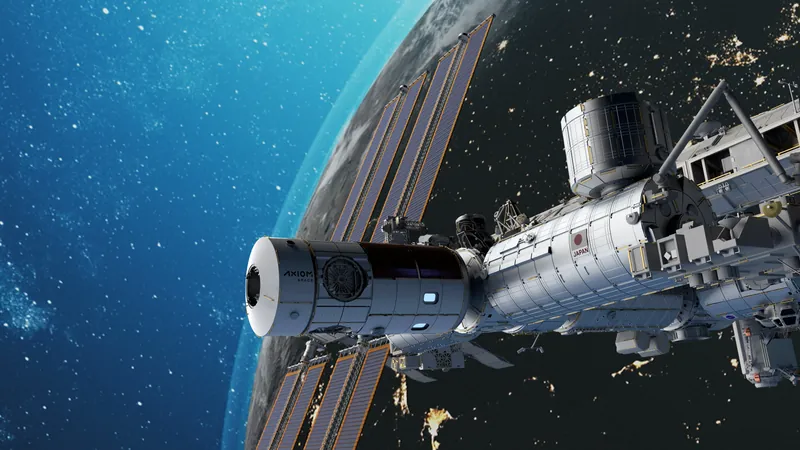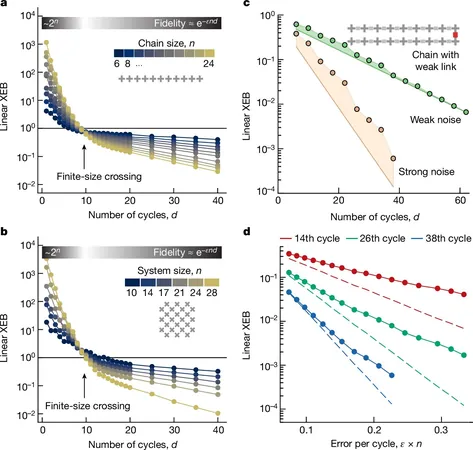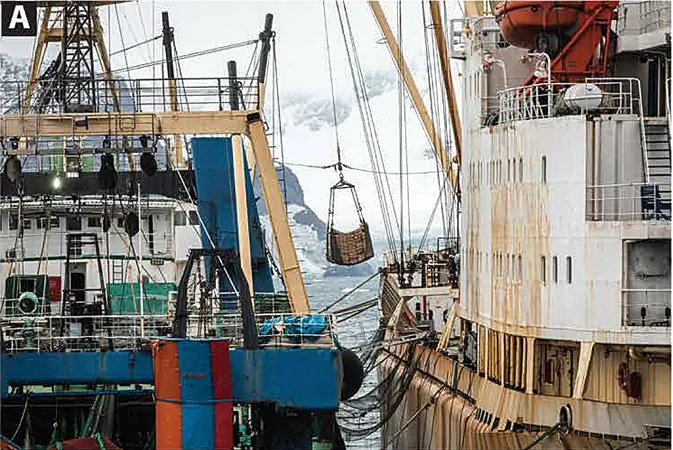
NASA's Urgent Quest for a New Space Station: Will the Clock Run Out?
2024-10-03
Author: Yu
As we approach a pivotal year, NASA is racing against time to define the future of human activity in low-Earth orbit.
For the first time in decades, the chance of being without any crew members orbiting Earth is increasingly likely unless decisive actions are taken.
The Crucial Need for Microgravity Research
Pam Melroy, NASA’s deputy administrator, strongly advocates for the continuation of low-Earth orbit operations, emphasizing the interconnectedness of space research. "The relationship between low-Earth orbit, Artemis, and future manned missions to Mars is crucial," Melroy points out. "We must convey why this work is essential to our exploration goals."
Recent years have seen NASA maximized microgravity research aboard the International Space Station (ISS), studying both basic science and the long-term health effects on astronauts. Melroy noted, "We’re not finished with microgravity research. Understanding long-term missions is vital, especially with potential two- or three-year trips to Mars on the horizon."
Technological advancements in life support systems, specifically the Environmental Control and Life Support Systems (ECLSS), are also critical. Currently, water recycling technologies achieve around 95-97% efficiency on the ISS, but future Mars missions will require near-perfect systems capable of supporting crew over extended periods.
To this end, NASA drafted its "Microgravity Strategy," outlining its research goals for the 2030s and beyond. After gathering input from the space community, a final strategy is expected to be published soon.
The Commercial Space Station Dilemma
Three years ago, NASA awarded significant contracts to companies such as Blue Origin, Northrop Grumman, and Axiom Space to kickstart commercial space station efforts under its Commercial LEO Destinations (CLD) program. Unfortunately, many of these ventures have faced substantial hurdles. For instance, Axiom has encountered serious financial challenges, while Northrop Grumman abandoned the program, citing an unviable business model.
As NASA prepares to issue new requests for proposals, the agency hopes to maintain competition by awarding multiple contracts. However, the viability of these commercial stations remains uncertain, with companies like SpaceX and newcomers like Vast Space expressing interest but lacking concrete commitments.
Melroy acknowledged the high expectations from commercial operators, speculating on a phased approach where basic operations might commence around 2030 before expanding services.
How Committed is NASA?
The future of CLD and its funding is precarious. Historical allocations have fluctuated, with the program receiving minimal support in its early years. Recent years indicate a growing recognition of the necessity of commercial low-Earth orbit capabilities, particularly as the ISS nears its operational limit.
However, experts like Casey Dreier of The Planetary Society express caution regarding NASA’s true commitment to maintaining a foothold in low-Earth orbit. "It’s an experiment that’s worth running, but one has to wonder if it's a true national priority."
Avoiding a Dangerous Gap
The prospect of a commercial station not being ready by 2030 is concerning. Discontinuing the ISS without a suitable replacement could severely impact ongoing research and commercial efforts. NASA estimates it spends about $3 billion annually maintaining the ISS, a substantial cost that could be significantly reduced by transitioning to private platforms.
Some experts argue that while a gap in low-Earth orbit operations would be inconvenient, it might not be catastrophic. NASA’s Phil McAlister stated, “If the CLDs are not ready, we could have a short-term gap, but it might not be the end of the world."
Will There Be a Demand?
The key question remains: Is there sufficient demand from private entities for commercial space stations beyond government contracts? A 2017 report suggested a significant hurdle exists, as the financial viability of such endeavors depends on a clear revenue stream and recognizable applications for human presence in space—a "killer app" that has yet to materialize.
Overall, as NASA navigates these uncertainties, one thing is clear: decisive actions are needed now to secure a sustainable future in low-Earth orbit. With the clock ticking down to critical decisions in 2024, the stakes for NASA’s next chapter in space exploration have never been higher. Will they rise to the challenge, or will the opportunity slip away?





 Brasil (PT)
Brasil (PT)
 Canada (EN)
Canada (EN)
 Chile (ES)
Chile (ES)
 España (ES)
España (ES)
 France (FR)
France (FR)
 Hong Kong (EN)
Hong Kong (EN)
 Italia (IT)
Italia (IT)
 日本 (JA)
日本 (JA)
 Magyarország (HU)
Magyarország (HU)
 Norge (NO)
Norge (NO)
 Polska (PL)
Polska (PL)
 Schweiz (DE)
Schweiz (DE)
 Singapore (EN)
Singapore (EN)
 Sverige (SV)
Sverige (SV)
 Suomi (FI)
Suomi (FI)
 Türkiye (TR)
Türkiye (TR)